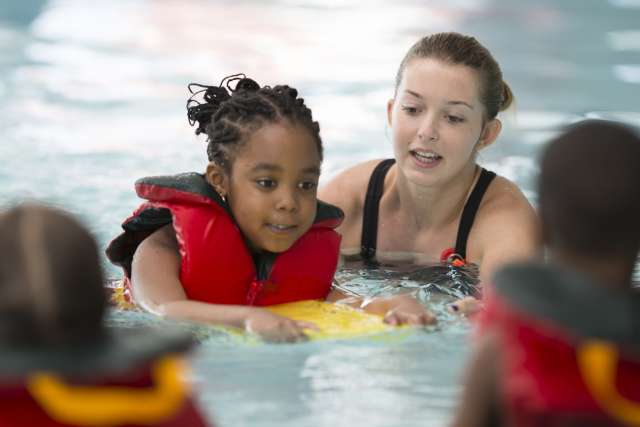Dear Doctors: Our 3-year-old daughter almost drowned when she fell into a neighbor’s pool last summer. She’s going to be OK, but she is still facing some medical problems. This has made us aware that water safety is actually a health issue. We hope you might address this in an upcoming column.
Dear Reader: As parents ourselves, we appreciate your bringing up an important topic. Unfortunately, accidental drownings are a grim fact of summer life. Data reported to the Centers for Disease Control and Prevention show that at least 4,500 people drown in the United States each year, with young children at highest risk. In fact, drowning is the leading cause of death in children between the ages of 1 and 4 years of age and has overtaken motor vehicle crashes to become the second-leading cause among children 5 to 14. Even more sobering is that the number of drownings in the younger age group increased 28% between 2019 and 2022. Drowning deaths also saw a sizable jump among Indigenous, Black and Hispanic people and adults of all ethnicities over age 65.
One of the best things you can do to keep your children safe near the water is to make sure they -- and you -- know how to swim. Swimming lessons for children as young as 1 and adults of all ages and levels are available at many YMCAs and community or public pools. Adults who are swimmers might consider a class to refresh and maintain their skills. And speaking of skills, learning CPR makes everyone safer.
Another key to water safety is surveillance. Limit swimming to pools with good visibility in both the shallow and deep ends. When at a pond, lake or the ocean, create a safe and manageable swim zone by setting strict physical boundaries for the width and depth of the play area. Even when a child knows how to swim or is in shallow water, constant vigilance is crucial. It is recommended that an adult who can swim always have eyes on, and be within easy reach of, a child in the water, no matter their level of swimming skill. Dressing kids in bright-colored swim clothes makes them easier to track in the splashing, sun-dazzled chaos of a day in the water. Although inflatables like water wings, arm bands and inner tubes can help swimmers stay afloat, they should be viewed solely as toys and should never be relied on as safety gear.
Water safety experts stress that, contrary to the Hollywood depiction of the flailing swimmer shouting for help, drowning is often silent. A drowning person bobs up and down near the surface, arms at their sides and head tilted back as they fight to keep their mouth and nose above water. And because it is likely they have already inhaled water, they can neither cry out nor breathe in. It can take mere seconds to lose that stage of the battle and slip down and out of sight. Being familiar with the subtle signs of drowning can save a life. For more information on water safety, visit poolsafely.gov.
(Send your questions to askthedoctors@mednet.ucla.edu, or write: Ask the Doctors, c/o UCLA Health Sciences Media Relations, 10960 Wilshire Blvd., Suite 1955, Los Angeles, CA, 90024. Owing to the volume of mail, personal replies cannot be provided.)





